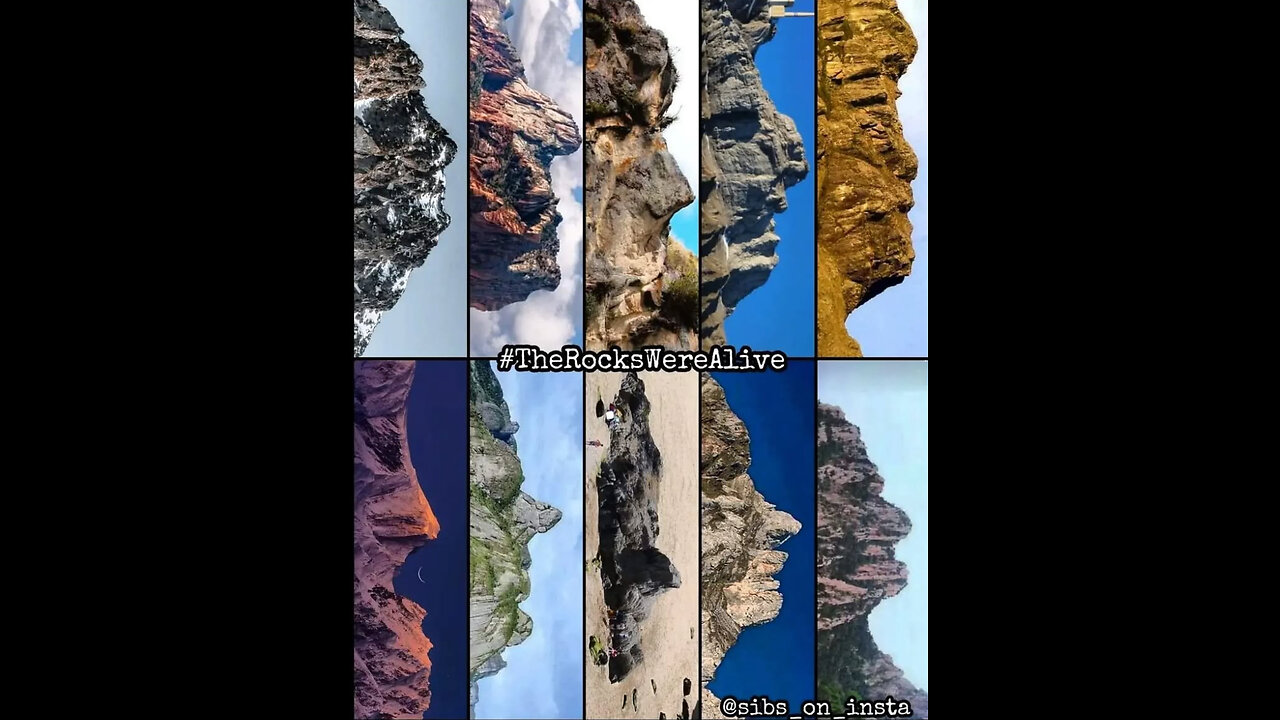Premium Only Content

🜏 Colossus in the Cliffs: Membranes, “Mud Fossils,” and the Parasites That Outlived Titans
What if the banded rock we call “sedimentary layers” isn’t just geology—but anatomy on a continental scale?
This video breakdown follows the mud-fossil thesis: that many stark cliff bands are bi-lipid membranes and interstitium from enormous organisms, with the familiar “mochi marbles” as the tough anchor nodes that once held fascia under living tension.
Inside the claims
• Membrane architecture: Twin bands (upper/lower) with a fluid-filled highway between—matching modern interstitium models (anchor spheres + elastic fibers).
• The “giant fossil” in UK strata: Not the host—a parasite that lived within the membrane channel, later quarried as a standalone “creature.”
• Comparative outcrops: Oregon’s layered faces and Huntington Beach’s marble fields echo soft-tissue geometry more than flood stacking.
• Megafauna → sea legends: As titanic bodies collapsed (think Typhon), internal parasites allegedly exited via blood run-off to the sea—fueling global lore of leviathans.
• Macro-biological signatures: Hair-follicle macrofossils, fascia “tabs,” and claimed DNA/CT evidence—ignored by mainstream filters but consistent within the model’s logic.
Why this matters
If layers are organs, history, paleontology, and scale are due for a rewrite. The proposal may be controversial, but the pattern repetition—membranes, nodes, channels—begs to be tested, not dismissed.
Watch for
• Clear membrane splits and repeating bands
• Node fields (“marbles”) where fascia would anchor
• Color shifts suggesting vascular pathways
• Fossils found inside the “inter-membrane” zone
Note: This presentation explores a heterodox interpretation. Treat it as a hypothesis to pressure-test—map features, sample layers, and compare against both standard stratigraphy and soft-tissue mechanics. Curiosity first.
-
 1:33
1:33
FragmentsOfTruth
3 days ago🜏 THE RESET ASYLUMS — Facilities of the Great Silence
2971 -
 1:31:25
1:31:25
The Confessionals
9 hours agoThe Queen of Heaven Exposed (Hathor, Lilith & Ancient Gods Return)
7.63K2 -
 LIVE
LIVE
LFA TV
14 hours agoLFA TV ALL DAY STREAM - TUESDAY 9/2/25
888 watching -
 LIVE
LIVE
LIVE WITH CHRIS'WORLD
6 hours agoLIVE WITH CHRIS'WORLD - IT WORKED IN D.C. & IT WILL WORK IN CHICAGO
123 watching -
 40:44
40:44
Ohio State Football and Recruiting at Buckeye Huddle
5 hours agoOhio State Football: 10 Things We Learned From Rewatching the Texas Win
3.77K -
 DVR
DVR
Edge of Wonder
7 hours agoRemote Viewing 3I/ATLAS & Yellowstone’s Weird Anomalies
8.83K -
 1:08:47
1:08:47
TheCrucible
4 hours agoThe Extravaganza! EP: 30
78.2K8 -
 1:16:58
1:16:58
Kim Iversen
10 hours agoCOVID VACCINE HORROR: Fertility Destroyed & DNA Altered? | Nicolas Hulscher, MPH
44.1K98 -
 1:58:54
1:58:54
Wayne Allyn Root | WAR Zone
7 hours agoWAR Zone LIVE | 2 SEPTEMBER 2025
14.5K1 -
 1:01:05
1:01:05
Jeff Ahern
4 days ago $2.32 earnedFriday Freak out with Jeff Ahern
29K8